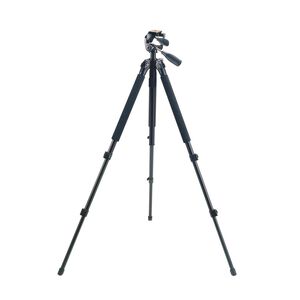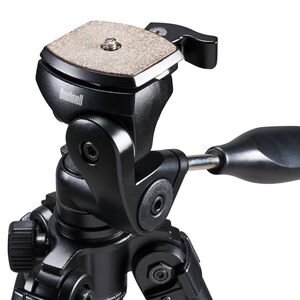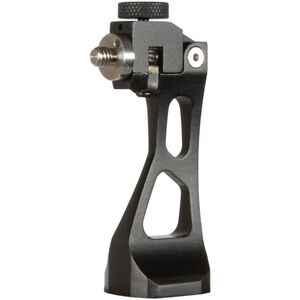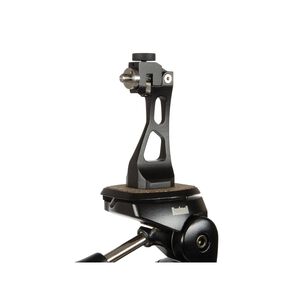More and more hunters are leaving their spotting scopes at home and, instead, taking high-powered binoculars and a tripod into the field for both scouting and hunting.
It’s a practical choice, usually based on how much gear they want to haul in the field, according to Matt Rice, marketing manager for Bushnell.
“As they say in the field, ounces are pounds,” Rice said, “so do I carry along my binos and a spotting scope, or can I leave one at home? We are seeing a lot of hunter going to higher power binoculars and leaving the spotting scope." Especially hunters in western states where hunters encounter extended distances “and you have more opportunities to glass before you make a move or before you decide which way you’re going to attack a hunting situation,” he said.
Many optics companies, Bushnell included, are producing high-powered binoculars that fill the bill. “We have 25x56 binoculars that are awesome and can do pretty much anything a spotter can,” Rice said.
There are trade-offs when it comes to selecting a tripod for your binoculars. Some are lightweight and therefore more easily carried, especially on the long distances sometimes required on scouting trips. But light weight often comes at the cost of rigidity and stability. Glassing through binoculars weaving atop a flimsy tripod is a recipe for tired eyes and a headache. Heavier, sturdier tripods offer steadier viewing, at the cost of extra weight.
You’re scouting for a reason—to see what’s out there—so choose on the side of which tripod is going to provide the best viewing experience.
There are some features you’ll want your tripod to have, Rice said, including:
- A pivoting head, so you can easily tilt the binocular up or down and swivel side to side, without having to move or adjust the tripod’s legs. Bushnell’s Elite Tactical tripod features a pivoting pistol-grip handle which allows for easy, one-hand operation.
- Enough weight, and sturdy construction to withstand wind, bumps, or uneven surfaces that might cause it to tip your binocular onto rocks, mud, snow, or over a precipice. “You want that thing to feel like it can stand up and support what’s on top of it and not have any issues,” Rice said.
- Quality materials and components, including heavier-grade metal and solid locks to keep legs securely extended. Rice said they’ve seen competitor companies’ tripods fail, which is why Bushnell’s are designed to be beefier “so it’s going to last longer and save your binocular from damage” caused by tripod failure, he said.
- Easy on and off so you can quickly set up for viewing and take down when it’s time to move. Make sure your binocular’s screw-in port is compatible with the screw attachment of the tripod, Rice cautioned. There’s not a standard size and some manufacturer’s products won’t fit with another’s.

JOE ARTERBURN
A journalist by profession and hunter by inherent inclination, Joe Arterburn has more than 35 years of experience as a writer and in the outdoor industry. He is a freelance writer for major outdoor publications, including Petersen’s Hunting, Outdoor Life, Hunter’s Handbook, Gun Digest and Gun Dog, as well as online publications.
This article was originally published for the International Hunter Education Association (IHEA). Bushnell is a proud sponsor of the IHEA and continuing the heritage of hunting worldwide by developing safe, responsible, knowledgeable and involved hunters.




